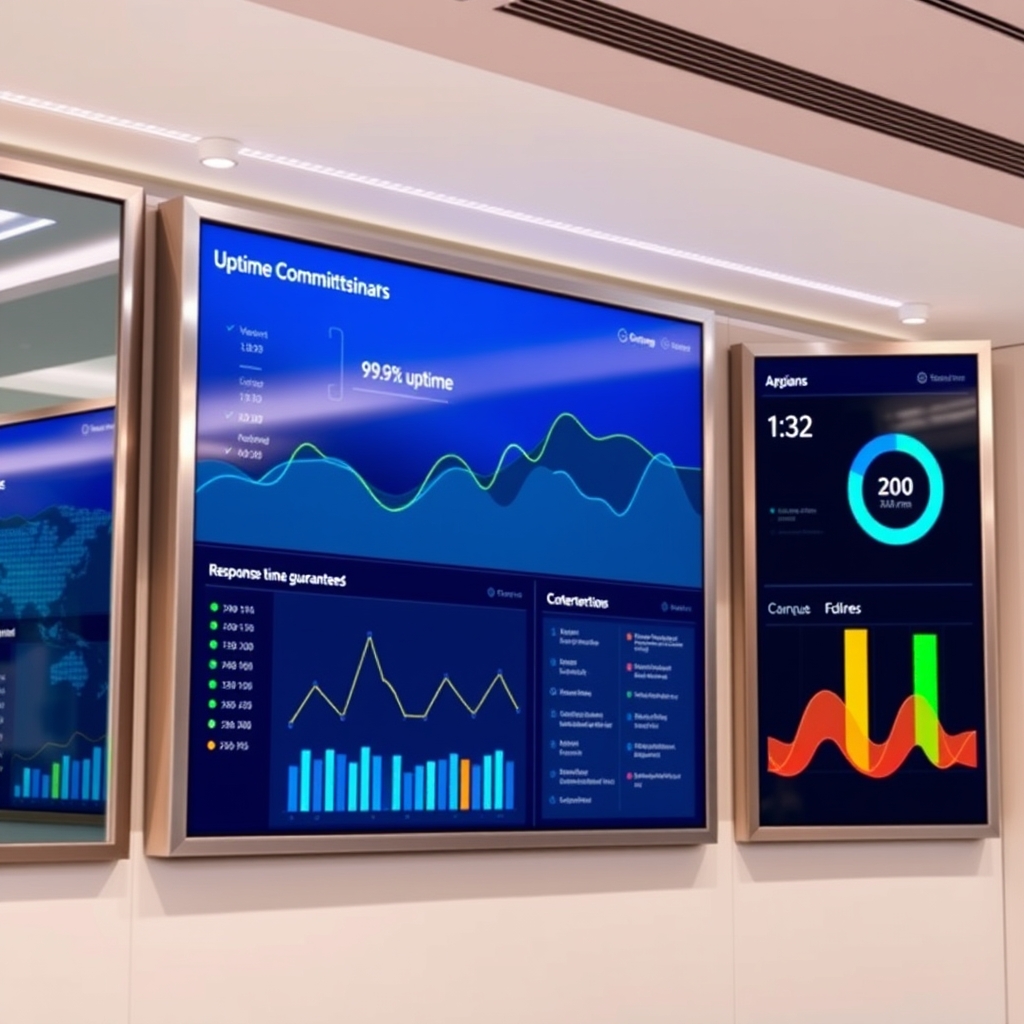Visualizing API Uptime with {Tool Feature} from a Monitoring Platform

Visualizing API Uptime with {Tool Feature} from a Monitoring Platform
Understanding the Uptime API
The Uptime API is a powerful tool designed for comprehensive monitoring and uptime tracking of APIs, websites, and services. It enables developers and businesses to ensure their services are available and performing optimally. By leveraging this API, organizations can monitor service availability, track performance metrics, and receive real-time alerts through various notification channels.
With the Uptime API, businesses can proactively manage their digital services, ensuring that any downtime is swiftly addressed. This capability is crucial in today's fast-paced digital environment, where service reliability directly impacts customer satisfaction and business performance.
For more information, visit the Uptime API website.
Key Features of Uptime API
The Uptime API offers a range of features that make it an essential tool for monitoring services effectively. Here are some of the key features:
- Real-time monitoring: Check intervals as frequent as every 60 seconds.
- Customizable alert notifications: Receive alerts via email, SMS, webhook, and Slack.
- Performance metrics: Track response time, uptime percentage, and error rates.
- Historical data: Analyze trends over time to identify patterns.
- SSL certificate monitoring: Get alerts for SSL certificate expiration.
- Keyword monitoring: Validate content by monitoring specific keywords.
- Multi-location monitoring: Ensure global coverage by monitoring from various locations.
Monitoring Types Supported
The Uptime API supports various types of monitoring, making it versatile for different use cases:
- HTTP/HTTPS APIs
- Public APIs
- Private APIs
- Keyword-based monitoring
- Custom status codes
- Response time tracking
Notification Channels for Alerts
Effective monitoring requires timely notifications. The Uptime API provides several channels for alert notifications:
- SMS
- Webhook
- Slack
Example API Responses
Monitoring Status
{
"success": true,
"data": {
"monitor": {
"id": "mon_123456",
"name": "API Health Check",
"url": "https:\/\/api.example.com\/health",
"status": "up",
"uptime": 99.95,
"response_time": 245,
"last_check": "2024-03-20T10:30:00Z",
"ssl_status": "valid",
"ssl_expiry": "2025-01-15T00:00:00Z"
}
}}Alert Configuration
{
"success": true,
"data": {
"alert": {
"id": "alert_789",
"name": "Downtime Alert",
"type": "email",
"recipients": [
"[email protected]"
],
"conditions": {
"status": "down",
"duration": "5 minutes"
},
"enabled": true
}
}}Performance Metrics
{
"success": true,
"data": {
"metrics": {
"uptime_24h": 99.98,
"uptime_7d": 99.95,
"uptime_30d": 99.92,
"avg_response_time": 234,
"max_response_time": 1250,
"min_response_time": 89,
"total_checks": 1440,
"successful_checks": 1439,
"failed_checks": 1
}
}}Use Cases for Uptime API
The Uptime API is suitable for a variety of use cases across different industries. Here are some scenarios where it proves invaluable:
- E-commerce platforms: Monitoring payment APIs to ensure transactions are processed smoothly.
- SaaS applications: Ensuring service availability for users and maintaining trust.
- Mobile apps: Monitoring backend services to provide a seamless user experience.
- Financial services: Tracking critical APIs to ensure compliance and reliability.
- Healthcare systems: Monitoring patient data APIs to ensure data integrity and availability.
- Gaming platforms: Monitoring real-time services to enhance user engagement.
- IoT applications: Monitoring device connectivity to ensure operational efficiency.
Insights from API Data
The data provided by the Uptime API is rich and varied, allowing businesses to derive valuable insights. By making frequent API calls, organizations can gather comprehensive data that informs decision-making. Here are some insights that can be derived:
- Performance trends: Analyze historical data to identify performance trends and areas for improvement.
- Service reliability: Monitor uptime percentages to ensure services are consistently available.
- Response time analysis: Track response times to identify bottlenecks and optimize performance.
- Alert effectiveness: Evaluate the effectiveness of alerts and response strategies based on historical data.
Frequently Asked Questions
What is the Uptime API?
The Uptime API is a monitoring tool that provides real-time tracking of APIs, websites, and services, allowing businesses to ensure their digital services are available and performing optimally.
How does the Uptime API notify me of issues?
The Uptime API can send notifications through various channels, including email, SMS, webhooks, and Slack, ensuring you are promptly informed of any issues.
What types of monitoring does the Uptime API support?
The Uptime API supports monitoring for HTTP/HTTPS APIs, public and private APIs, keyword-based monitoring, and custom status codes.
Can I track performance metrics with the Uptime API?
Yes, the Uptime API provides performance metrics such as uptime percentage, response time, and error rates, allowing you to analyze the performance of your services.
Where can I find more information about Uptime API features?
You can explore the features of the Uptime API on the features page.
Conclusion
In summary, the Uptime API is an essential tool for businesses looking to monitor their APIs, websites, and services effectively. With its comprehensive monitoring capabilities, real-time alerts, and rich performance metrics, organizations can ensure their services are reliable and available.
The ability to make frequent API calls enhances data accuracy and provides deeper insights into service performance. By leveraging the Uptime API, businesses can proactively address issues, optimize performance, and ultimately improve customer satisfaction.
As digital services continue to evolve, the importance of robust monitoring solutions like the Uptime API cannot be overstated. Future integrations with other platforms and services will only enhance its capabilities, making it a superior choice for organizations seeking to maintain high service availability and performance.
For more information about pricing and to get started with the Uptime API, visit the pricing page. Embrace the power of monitoring with the Uptime API and ensure your services are always at their best.